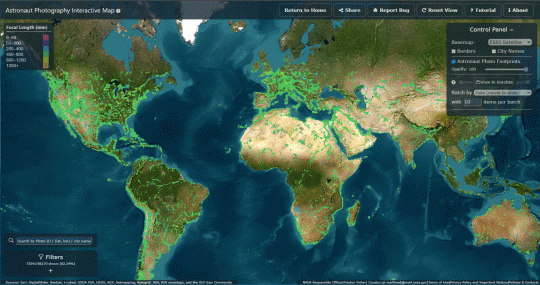ISS050-E-37024
| NASA Photo ID | ISS050-E-37024 |
| Focal Length | 400mm |
| Date taken | 2017.01.30 |
| Time taken | 00:03:02 GMT |
1000 x 666 pixels 540 x 359 pixels 4928 x 3280 pixels 720 x 480 pixels 4928 x 3280 pixels 640 x 426 pixels
Country or Geographic Name: | ITALY |
Features: | MT. VESUVIUS, CIS, S. COAST, NAPLES AT NIGHT |
| Features Found Using Machine Learning: | |
Cloud Cover Percentage: | 10 (1-10)% |
Sun Elevation Angle: | -65° |
Sun Azimuth: | 25° |
Camera: | Nikon D4 Electronic Still Camera |
Focal Length: | 400mm |
Camera Tilt: | 13 degrees |
Format: | 4928E: 4928 x 3280 pixel CMOS sensor, 36.0mm x 23.9mm, total pixels: 16.6 million, Nikon FX format |
Film Exposure: | |
| Additional Information | |
| Width | Height | Annotated | Cropped | Purpose | Links |
|---|---|---|---|---|---|
| 1000 pixels | 666 pixels | No | No | Earth From Space collection | Download Image |
| 540 pixels | 359 pixels | Yes | No | Earth From Space collection | Download Image |
| 4928 pixels | 3280 pixels | No | No | NASA's Earth Observatory web site | Download Image |
| 720 pixels | 480 pixels | Yes | No | NASA's Earth Observatory web site | Download Image |
| 4928 pixels | 3280 pixels | No | No | Download Image | |
| 640 pixels | 426 pixels | No | No | Download Image |
An astronaut aboard the International Space Station took this photograph of the city lights of Naples and the Campania region of southern Italy. A regional view of Italy from 2014 shows the Naples region to be one of the brightest in the country. Roughly three million people live in and around this metropolitan area.
The different colors of lights in the scene reflect some of the history of development in the area. The green lights are mercury vapor bulbs, an older variety that has been replaced in newer developments by orange sodium bulbs (yellow-orange). To the northeast, the lightless gaps between the homes and businesses are agricultural fields. The bright yellow-orange complex amidst the fields is the CIS emporium, the largest commercial retail facility in Europe.
The large black circular area in the photo is Mount Vesuvius, the only active volcano on Europe's mainland. Vesuvius is a stratovolcano, made up of different materials--pyroclastic flows, lava flows, and debris from lahars that accumulated to form the volcanic cone. Although any volcanic materials can endanger surrounding communities, pyroclastic flows of superheated ash and gas are among the most dangerous, moving at speeds of hundreds of kilometers per hour. The cities of Pompeii and Herculaneum were destroyed in 79 AD by pyroclastic flows, which trapped more than 16,000 people.
Such historic catastrophes --and the fact that 600,000 people live in the immediate vicinity--are the reason the volcano is one of the most heavily monitored in the world, with several dozen sensors located at many points on and around the cone.
Vesuvius is part of the Campanian Volcanic Arc which includes the Campi Flegrei caldera/geothermal field to the west of Naples near Agnano and Mount Etna in Sicily.


